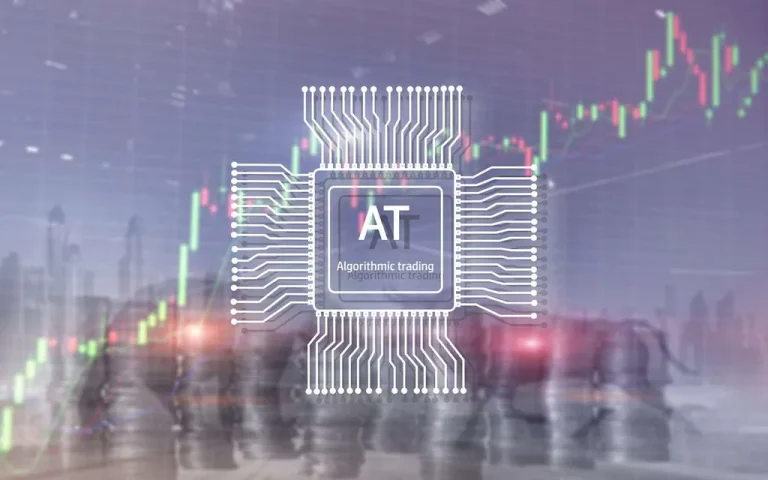Or Pay-n-Chat Switzerland may promote Swiss francs for euros and ship these to Pay-n-Chat Italy. Read the subsequent chapter within the report, “How transaction banks are reinventing treasury providers Stablecoin Payments.” For a more in-depth exploration of these subjects, see McKinsey’s insights on monetary providers.
Stablecoins’ Role In Crypto And Past: Features, Dangers And Coverage
And my visitor this week follows these trends closely, and I’m thrilled to have her on the podcast for the very first time. This could ensure that giant institutions may have confidence in buying and selling tokenised belongings. More broadly, I think it is doubtless that a world making higher use of DLTs, good contracts, and so forth will still discover a significant position for some degree of centralised techniques and decision-making. So I expect that tokenised asset transactions will sometimes be settled in fiat currencies, such as the Australian dollar, the US dollar, the euro, and so on. And I would expect that the fiat foreign money instruments used will be riskless or near-riskless; that’s, they are likely to be CBDCs or very protected stablecoins issued by regulated entities.

Unleashing Solar Power’s Brilliant Future
For these causes, we’re trying carefully on the concept of a central bank digital currency for the UK. CBDCs are issued by a country’s central financial institution and may be thought of like a digital banknote. They are like a digital illustration of the cash you already use. Central banks work to maintain the value of the money they issue secure. The backside line is that applicable regulation may provide a path whereby stablecoins turn into successfully equal to the usage of CBDC — when they’re issued by regulated institutions and backed by reserves. The laws supported in the aforementioned report would already embrace a clause providing the authority to take motion to prevent market concentration.
Regulatory Framework For Stablecoins

Cash usage in many countries continues to dwindle, while the cost to keep up its infrastructure doesn’t. Similarly, many countries’ current electronic payment methods are relatively inefficient to function and often not instantaneous or 24/7. Chief among these is stability, as backing is in completely protected and liquid property. Another is regulatory clarity, as slim banks would fit neatly into existing regulatory frameworks. Moreover, different stablecoins could presumably be seamlessly exchanged thanks to the central financial institution settling all transactions.
- Services related to stablecoins in the EU primarily include acquisition, holding or selling through completely different means, whereas the supply of providers for spending stablecoins at retailers is presently restricted.
- I suppose there’s some work being done, however with this session, I think we wish to discuss where things can go and then what are the dangers.
- Financial stability risks from stablecoins are presently nonetheless restricted in the euro area, but if growth trends proceed at their current pace, this will likely change in the future.
- And what they noticed is mainly, you know, that folks had been very sensitive to run into systemic banks.
- So this tells you, right, that that is principally, but people are attracted to it.
- However, for collateralised stablecoins like Tether and USD Coin, liquidity provision for decentralised buying and selling or lending is comparatively low compared to their total market capitalisation (less than 8%).
Regulatory Challenges Surrounding Stablecoins
At the identical time, stablecoins are additionally growing in popularity, and many people including politicians and regulators have started discussing tips on how to correctly regulate their issuance and use. In this article, I focus on the query of whether or not a regulatory framework for stablecoins — where regulated banks can issue stablecoins backed 100% by deposits on the central financial institution — could serve as a substitute for issuing CBDCs. It is not clear if blockchain know-how will ever be ready to outperform non-blockchain payment technology. Private stablecoins are argued to be technologically superior to traditional cost methods because they use blockchain platforms. Implementing such performance might be a complex and multilayered enterprise.

One key side to suppose about is the classification of stablecoins beneath current laws. Depending on their design and backing assets, stablecoins might fall beneath completely different regulatory categories such as securities, commodities, or e-money. This classification determines the legal requirements and obligations that issuers must adhere to. I’m just saying that on this world that we live in, that’s so digital, there are heaps of efficiency advantages, proper, from having the changing physical cash that is completely untraceable with digital cash.
Those deposits never came again to the smaller banks and really then led to extra focus of the banking system and the place the deposits have been. And actually, when you think even worse it could presumably be, then how to say sick meaning people might create these rumors to maybe undermine their rivals or undermine your country’s monetary system, as a end result of nothing worse than having havoc in a financial system. And there are some papers which have shown in some growing international locations, actually, rivals typically do that. So I, and that truly implies that there we have an approximation maybe of how much is sitting somewhere else, right, actually away. But typically it is really powerful to know what the energetic circulation.
The fact is that I assume all of us would not like that because we wouldn’t just like the Fed to be in command of the cybersecurity issues, the convenience of the interface designing, how that CBDC interface interfaces with personal, your private financial institution access and so on. This is just to say that we must be very aware that the steadiness of the stablecoin actually is dependent upon the quality of the asset backing. Bitcoin is so much less risky than it was once, and price continues to be holding in.

EMoney thus also features a model of “stablecoins” that’s fully backed or collateralized by fiat forex — what some call “digital fiat forex.” eMoney could be traded through an app in your cellphone, between people and businesses alike with ease and quick effect. Although the aggregate market worth of such cryptocurrencies now exceeds $2 trillion, excessive price volatility, robust value correlation to Bitcoin, and sometimes sluggish transaction confirmation occasions have impeded their utility as a sensible means of value exchange. Collectively, nearly $3 trillion in stablecoins such as Tether and USDC had been transacted in the first half of 2021 (Exhibit 1). Although the endgame of this intensive exercise that spans agile fintechs, deep-pocketed incumbents, and (mostly government-appointed) central banks remains removed from sure, the potential for vital disruption of established monetary processes is obvious. Against this backdrop we provide a fact-based primer on the universe of collateralized cryptocurrency, an overview of a number of potential future situations including potential advantages and obstacles, and near-term actions that participants in today’s financial ecosystem could think about in order to position themselves.
Indeed, the emergence and progress of supply of the outstanding stablecoin Tether first coincided with the speedy increase in cryptocurrency transaction quantity on exchanges in late 2017, a lot of which did not have fiat licenses. When was the last time you paid for one thing with chilly, onerous cash? While physical foreign money remains to be widely used all all over the world, folks in some international locations have been using it lots much less lately—especially during the COVID-19 pandemic, with its money shortages and hygiene issues.
You can consider them as ‘if, then’ statements that allow parties to enter into agreements figuring out that they will be enforced – if they are often and if circumstances are met – without the want to trust each other or rely on a central get together. They enable all sorts of latest purposes such as decentralised finance (DeFi), decentralised autonomous organisations (DAOs) and non-fungible tokens (NFTs), which I will not attempt to cover at present given our time constraint. (2022), “Mining the surroundings – is climate risk priced into crypto-assets? This weblog is the second in a two-part sequence on IMFBlog covering digital currencies. What occurs when Francesco needs to redeem his eMoney in euros? Pay-n-Chat Italy may have the ability to draw down reserves it holds with the ECB — once more, a fictitious example.

Consumers are capable of obtain and deploy a digital pockets from these banks without holding an account with them. In late 2019, PBOC began testing e-CNY via app- and wallet-based funds for presidency providers, buying, transportation, and other shopper life-style use cases. The pilot initially launched in 4 cities, then shortly expanded to 5 more.
The broad introduction of b-coins would mark a turning point not only for funds but additionally how capital markets work, with the risk of including a variety of latest algorithm-driven companies for execution and counterparty risk management. Technologists, innovation, strategy and digital groups will discover this report back to be a useful enter into their work. Government policy-makers thinking about CBDC might need to use this report to reflect on the most effective function for every actor in market exercise. Let me define CBDC as “essential” if it permits policymakers to achieve a aim that can’t be achieved with stablecoins backed by reserves. For instance, if the objective is to make stablecoins exchangeable, that might be carried out with regulation. Paying curiosity on stablecoins could be accomplished by paying curiosity on the reserves backing the stablecoins and (assuming entry prices are low) allowing competition to drive interest rates near the ones on reserves.
Given the potential dangers and cross-border nature of stablecoins, a granular and strong international regulatory strategy is important. The Financial Stability Board (FSB) published high-level suggestions for the regulation, supervision and oversight of world stablecoins in 2020.[37] However, the FSB suggestions present only high-level steerage. They are not granular enough on the precise requirements needed to make sure the soundness of stablecoins (for example, the capital and liquidity necessities necessary for the credible administration of reserve belongings or public disclosure) and a stage global enjoying field. Central banks may supply eMoney suppliers entry to their reserve accounts, underneath strict situations, of course.
Central financial institution digital currencies (CBDCs) are the digital type of a government-issued foreign money that isn’t pegged to a physical commodity. They are issued by central banks, whose position is to help monetary companies for a nation’s authorities and its commercial-banking system, set monetary coverage, and issue forex. Examples of central banks embody the US Federal Reserve System, the Bank of Japan, the People’s Bank of China (PBOC), and Germany’s Deutsche Bundesbank.
Read more about https://www.xcritical.in/ here.
